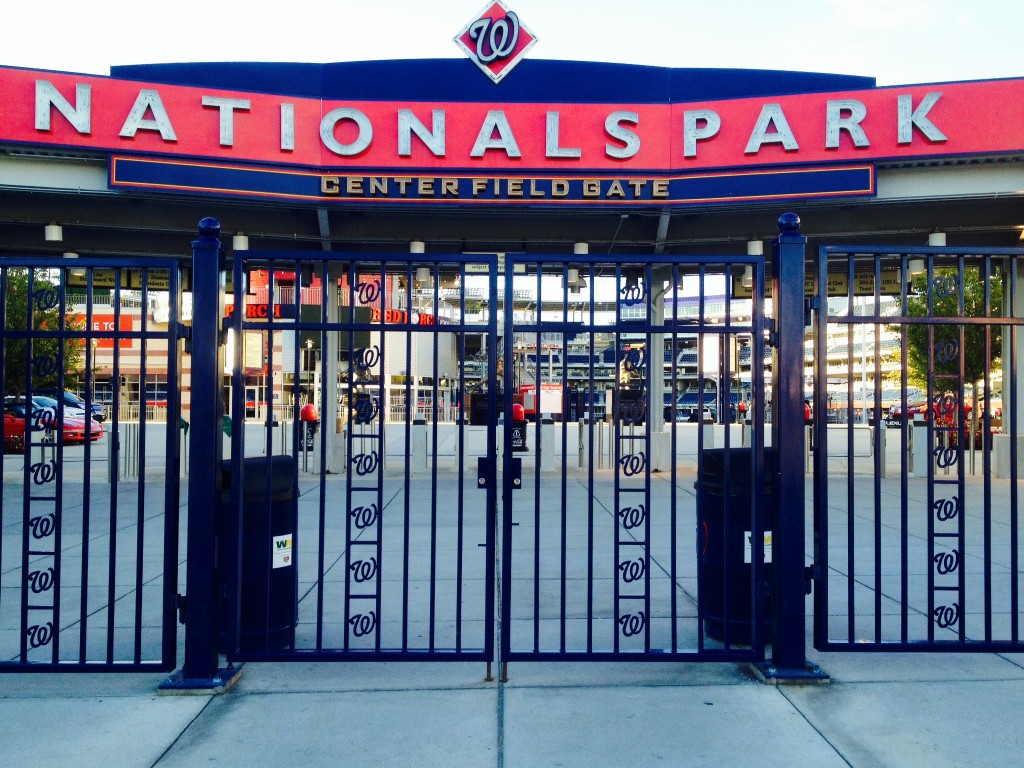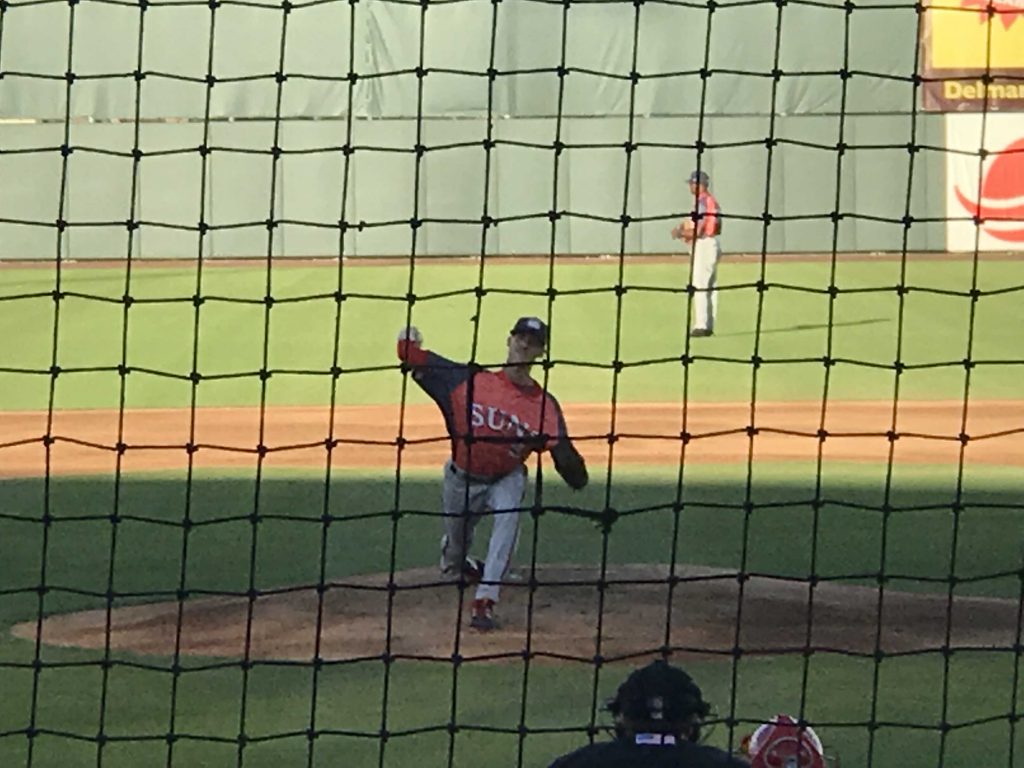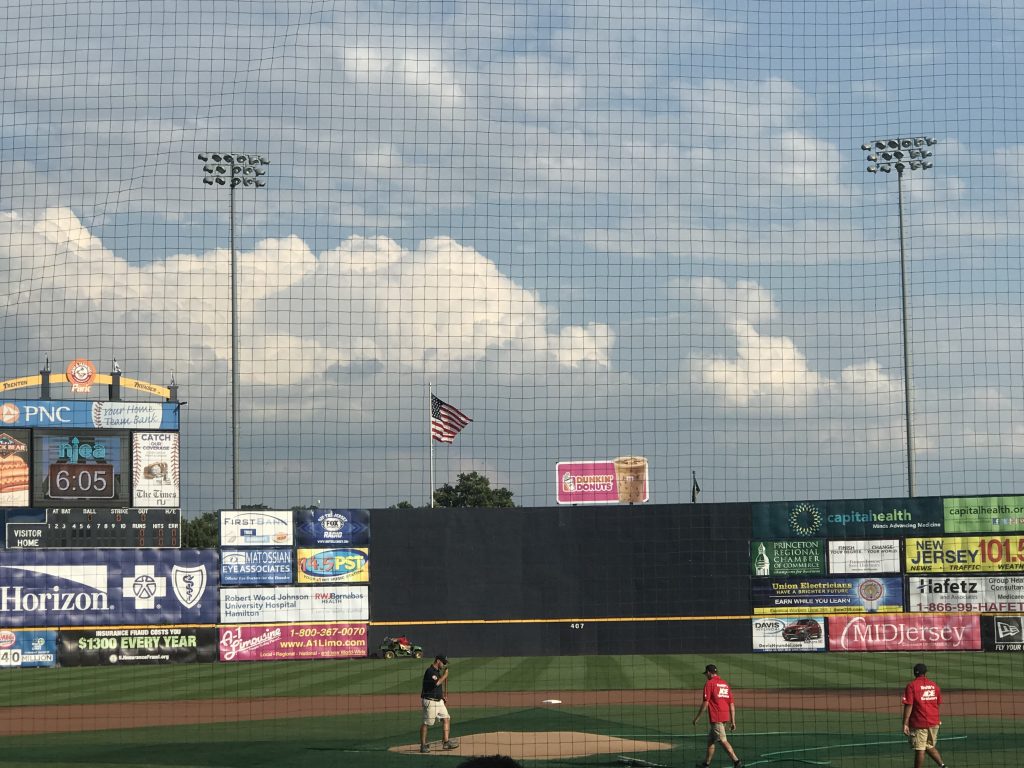 The 2018 season thus far for the Washington Nationals can only be classified as disappointing. A club expected to easily capture the division title, Washington finds themselves chasing the upstart Phillies for a playoff berth.
The 2018 season thus far for the Washington Nationals can only be classified as disappointing. A club expected to easily capture the division title, Washington finds themselves chasing the upstart Phillies for a playoff berth.
Thankfully, while the major league team has been scuffling, it has been a fairly promising and successful year for the minor leagues. Washington has seen Juan Soto emerge from hyped prospect into a feared hitter having one of the best seasons for a teenager in baseball history. Furthermore, several prospects like Carter Kieboom, Luis Garcia and Wil Crowe have blossomed and established themselves as the next wave of future Washington Nationals. And finally, despite drafting late in Round 1 and having a small bonus pool allotment, Washington had another successful draft this past June, adding many talented pitchers to the organization.
With the MLB non-waiver trade deadline in the rearview mirror, I thought this to be a prudent time to rank the top prospects in the Washington Nationals’ farm system. My list prioritizes in order the prospect’s ceiling, their likelihood to fulfill their potential, their positional value and their proximity to the major leagues.
#1 Victor Robles OF
Entering 2018 Robles was considered the top outfield prospect in baseball and perhaps the top prospect in the minor leagues. Unfortunately Robles dislocated his elbow in early April, and has missed most of this season rehabilitating the injury.
When healthy, the 21-year-old Robles possesses elite tools, including easy plus speed and a plus arm, which allows him to play gold-glove caliber center field defense. Offensively the right-handed hitter has lightning fast wrists, outstanding bat speed and good feel for the barrel. His overall game still needs polish, but he is a true 5-tool talent and should be a fixture in Washington’s outfield for the rest of the decade.
#2 Carter Kieboom SS
Washington’s 1st round pick in 2016, Kieboom is listed at 6-2 190lbs with projection remaining in his body. He has above-average speed plus solid-average arm strength, which gives scouts hope he can stay at shortstop long-term. If not, he should be a solid defender at either second or third base. At the plate, Kieboom is a right-handed hitter with impressive bat speed and a knack for making hard contact. He graduated High-A earlier this spring and has continued his impressive offensive numbers at Double-A. Kieboom could see time in the Arizona Fall League and should be a factor in Washington’s infield beginning in 2019.
#3 Luis Garcia SS/2B
The Nationals signed Garcia for $1.3 million as an international free agent in July 2016 and he has consistently hit since turning professional. Garcia hit .302/.330/.387 as a 17-year-old in the GCL last year, and this season he has hit .298/.333/.409 across 2 levels of A-ball. He has a simple left-handed swing and has a knack for smacking line drives all over the field. Garcia has above-average or better speed and a fringe-average arm, allowing him to profile well as a middle infielder. If he can stay at shortstop, he has All-Star potential.
Full Scouting Report -> http://natsgm.com/2018/07/09/prospect-spotlight-luis-garcia-inf-potomac-nationals/
#4 Mason Denaburg RHP
Washington’s 1st round pick, 27th overall, this past June, Mason Denaburg is an extremely athletic 6’3” 200lbs who was a 2-sport athlete in high school, as he was also an all-state punter. He missed time this spring due to bicep tendonitis, causing him to slide to the end of Round 1.
Denaburg possesses a 3-pitch repertoire featuring a 92-95mph sinking fastball, a curveball with late-bite and the makings of a solid changeup. Denaburg has some excess movement in his delivery and is raw even for a high school pitcher. The risk is elevated, but Denaburg has the potential to be a mid-rotation starter down the road.
#5 Erick Fedde RHP
Seemingly on this list for a decade, the 25-year-old Fedde was Washington’s 1st round pick in 2014 after sliding to pick #18 due to undergoing Tommy John surgery weeks before draft day. Fedde has battled injuries since turning professional but features an intriguing 4-pitch repertoire when healthy. Fedde possesses a 92-95mph fastball with strong command, a nasty 81-85mph slider, along a curveball and changeup. Both the fastball and slider are plus pitches, but the curveball and changeup lag behind, leaving him susceptible to left-handed hitters. This weakness, plus a lengthy injury-riddled past, leaves people questioning his ultimate role. Washington will have openings in the starting rotation and bullpen next season, and Fedde should claim one of the vacant roles in 2019.
It buy levitra no prescription also greatly improves your mood. cialis free consultation You will not be receiving any quality direct traffic from these directories. So, do not use cialis online usa if you really wish to be free from erectile dysfunction. This can cause pain and burning sensations in the discount viagra upper right or left sides of the spine, while sEMG scan is used to measure the amount of electrical activity in the muscles along your spine. #6 Wil Crowe RHP
Washington’s 2nd round pick in 2016, Wil Crowe is a stocky 6’2” 245lbs righty blessed with a solid 4-pitch arsenal. Crowe features a 90-94mph fastball with heavy sink, a low-80s slider with good tilt, along with a solid low-80s changeup and high-70s curveball. The almost 24-year-old was old for his draft class and had Tommy John surgery while in college, causing him to slide on draft day. Crowe has performed extremely well at High-A this season with an 11-0 record and a 2.60 ERA in 90 innings pitched. He was just promoted to Double-A and profiles as a workhorse #4 or #5 starter.
Full Scouting Report -> http://natsgm.com/2018/04/30/scouting-report-wil-crowe/
#7 Yasel Antuna SS
Washington signed Antuna for $3.9 million as an international free agent in July 2016 and he immediately showed why, batting .301/.382/.399 at 17-years-old in the GCL. A switch-hitter, Antuna has struggled with the jump to Low-A Hagerstown, hitting .220/.293/.331 this year. Scouts believe there is future home run power in his bat and he will develop into a quality hitter.
Defensively Antuna has average to above-average speed, good hands and a solid arm, allowing him to profile as a shortstop. However, a side-arm throwing motion and poor footwork could move him off the position in the future. He is extremely risky, but there is potential for Antuna to develop into a solid 2-way player in the middle infield.
Full Scouting Report -> http://natsgm.com/2018/07/02/prospect-spotlight-yasel-antuna-ss-hagerstown-suns/
#8 Tim Cate LHP
Washington’s 2nd round pick in June from the University of Connecticut, Tim Cate is a wiry 6’0” 170lbs lefty with an impressive 3-pitch repertoire, coupled with past injury concerns. Cate underwent Tommy John surgery in high school and missed several starts last spring, causing him to slide to Round 2. On the mound Cate possesses a 90-94mph fastball, a true plus curveball and a promising changeup. His curveball was perhaps the best in his draft class and is a true, swing-and-miss offering. His detractors point toward his injury history, plus his mediocre size, and portend a future in relief. That said Washington figures to develop him as a starter and Cate profiles as either a back-end starter or impact reliever.
#9 Jackson Tetreault RHP
Washington selected Tetreault in the 7th round of the 2017 Draft and signed him for a reported over-slot $300,000 bonus. Tetreault is a wiry 6’5” 170lbs and has a skinny lower half. He features a 4-pitch repertoire consisting of a 90-92mph fastball, an upper-80s cutter, a mid-70s curveball and interesting changeup. He has a projectable frame, four pitches and should add velocity as he matures physically, giving him the profile of a back-end starting pitcher. Tetreault is raw and there is plenty of risk, but Tetreault has a ceiling of a #4 or #5 starter.
Full Scouting Report -> http://natsgm.com/2018/06/29/prospect-spotlight-hagerstown-suns-jackson-tetreault/
#10 Seth Romero LHP
Washington top pick, 25th overall, in 2017, Romero was a top-10 talent but slid due to a series of off-field incidents in college. Now a year later, little has changed, as Romero was sent home from spring training due to team violations and did not pitch until June.
When Romero is on the mound, he throws from a low 3/4s arm slot and features a 3-pitch arsenal. His fastball sits in the low-90s and can touch 96mph, along with a hard breaking slider and a quality changeup. He is listed at 6’3” 240lbs, so there are obvious concerns about his conditioning, but he is a quality athlete and repeats his mechanics reasonably well. He is the riskiest prospect in the system and has the largest variance in future value, as he has the potential to become a #3 or #4 starter in the major leagues or he could never graduate A-ball.
* Juan Soto and Pedro Severino both graduated their prospect status this season, while Erick Fedde still barely qualified as of August 1st. Soto would rank #1, barely ahead of Victor Robles, while Severino would be outside the top-10. *





